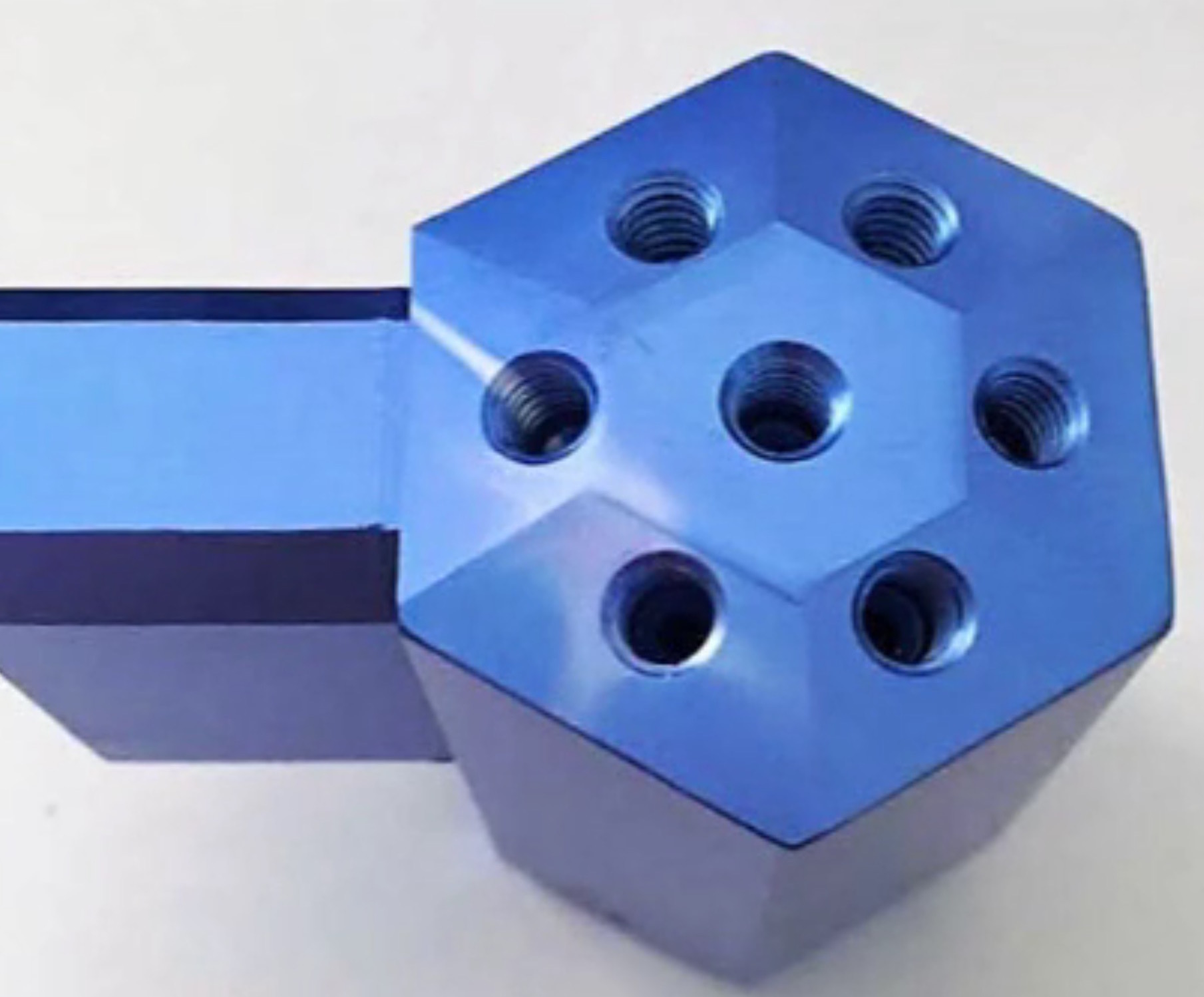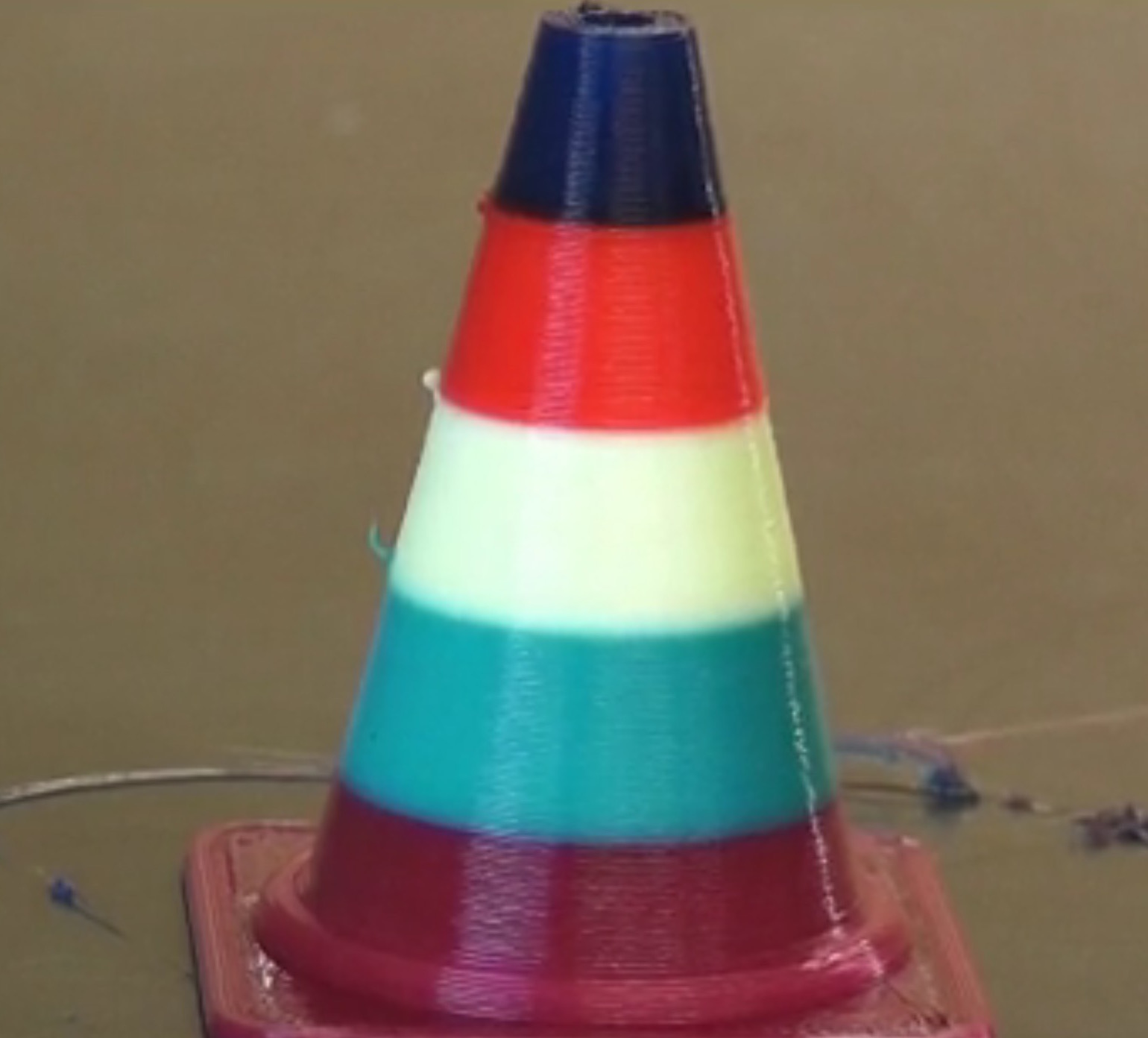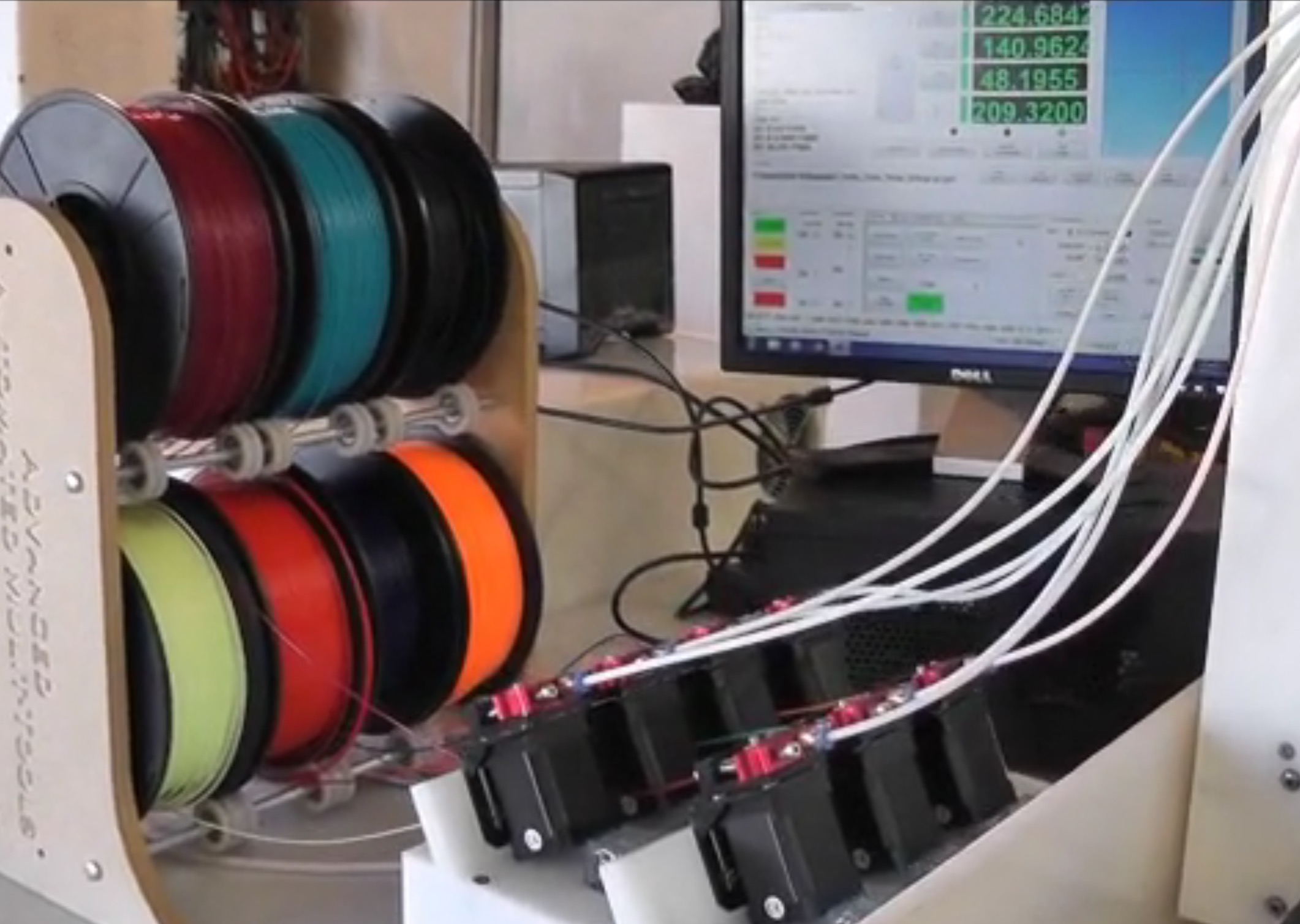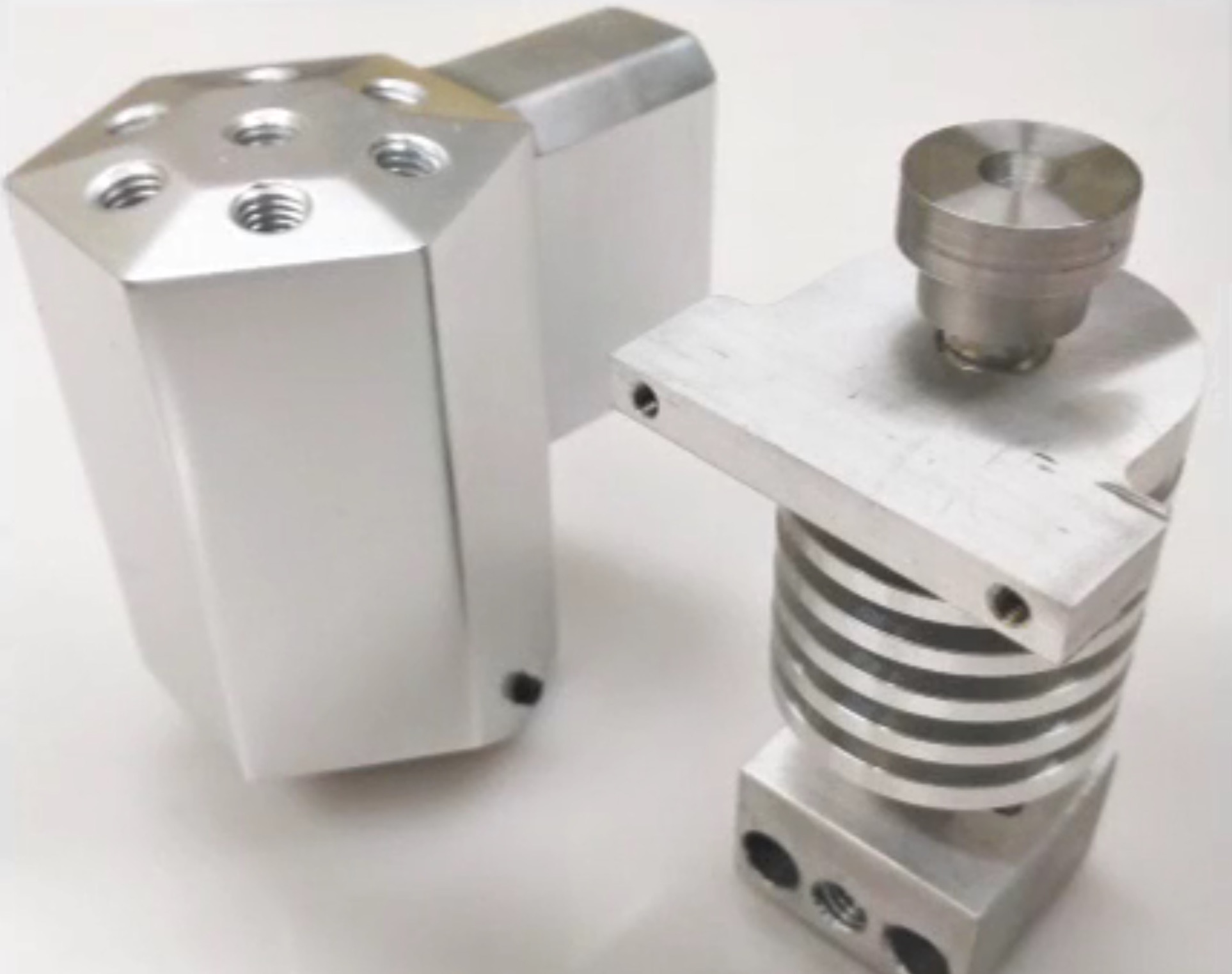
A new 3D print head is able to print not two, not three, but up to SEVEN different filaments at a time.
The CollideOScope (pronounced “Kaleidoscope”, get it?) is a custom-made extruder composed of the following elements:
A specially designed hot end (shown at top).

A “multiplexer”, able to accept up to seven different filaments, which funnels material into the hot end.

Up to seven extruder motors to power filament towards the multiplexer.

By carefully controlling the extruder motors, the multiplexer is able to switch colors (or materials) on the fly. Check this sample print of a multi-colored pylon and notice the transition layers between the colors really isn’t that bad. This is a significantly faster color switch than we’ve seen in other mixing print heads.

Of course, your 3D print setup will look a little different with this device, as you could need to supply seven different filament spools. This arrangement permits not only multi-color prints, but also is a very easy way to print the next object in a different color: just select the appropriate extruder.
The CollideOScope is now available for order on Kickstarter, but you’ll have to choose which option to select. The cheapest option is to select the USD$187 Multiplexer, which you would attach to the top of your existing hot end. On the other hand, you could select the USD$830 bundle, which includes not only the multiplexer, but also the hot end, seven extruders, fittings, electronics and cables.
This seems like a pretty good option for multicolor 3D printing, but we see two potential issues.
First, the multiplexor is pretty large in the vertical dimension. This means if it’s installed on an existing 3D printer, you may potentially lose some z-height. On a taller machine, that might not be an issue, however.
Secondly, there is very limited support for a seven extruder machine. The CollideOScope has been tested with Simplify3D, where they presumably set up a different print process for several layer ranges, each using a different extruder. That gets you layered color but not much else. You’d have to do something more complex to produce truly multicolored 3D prints.
Via Kickstarter and Advance Tech Engineering

